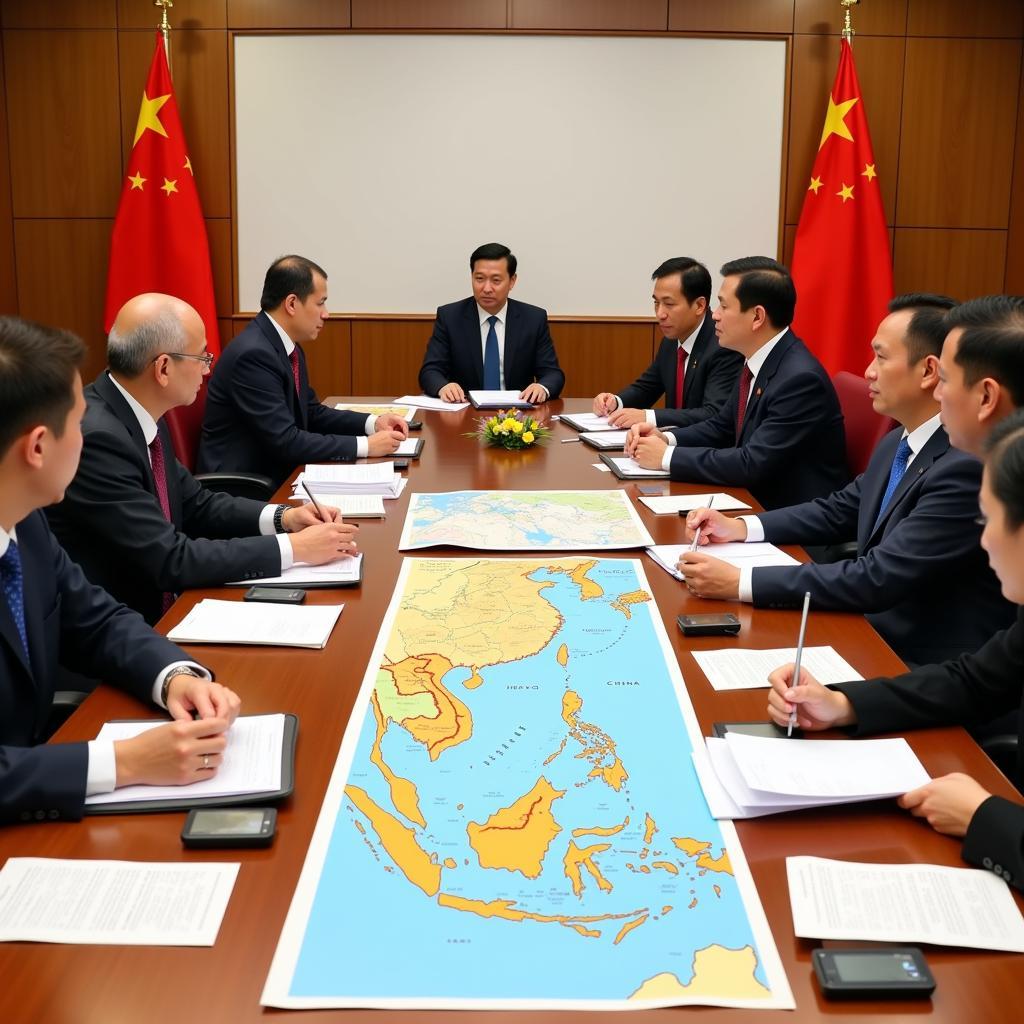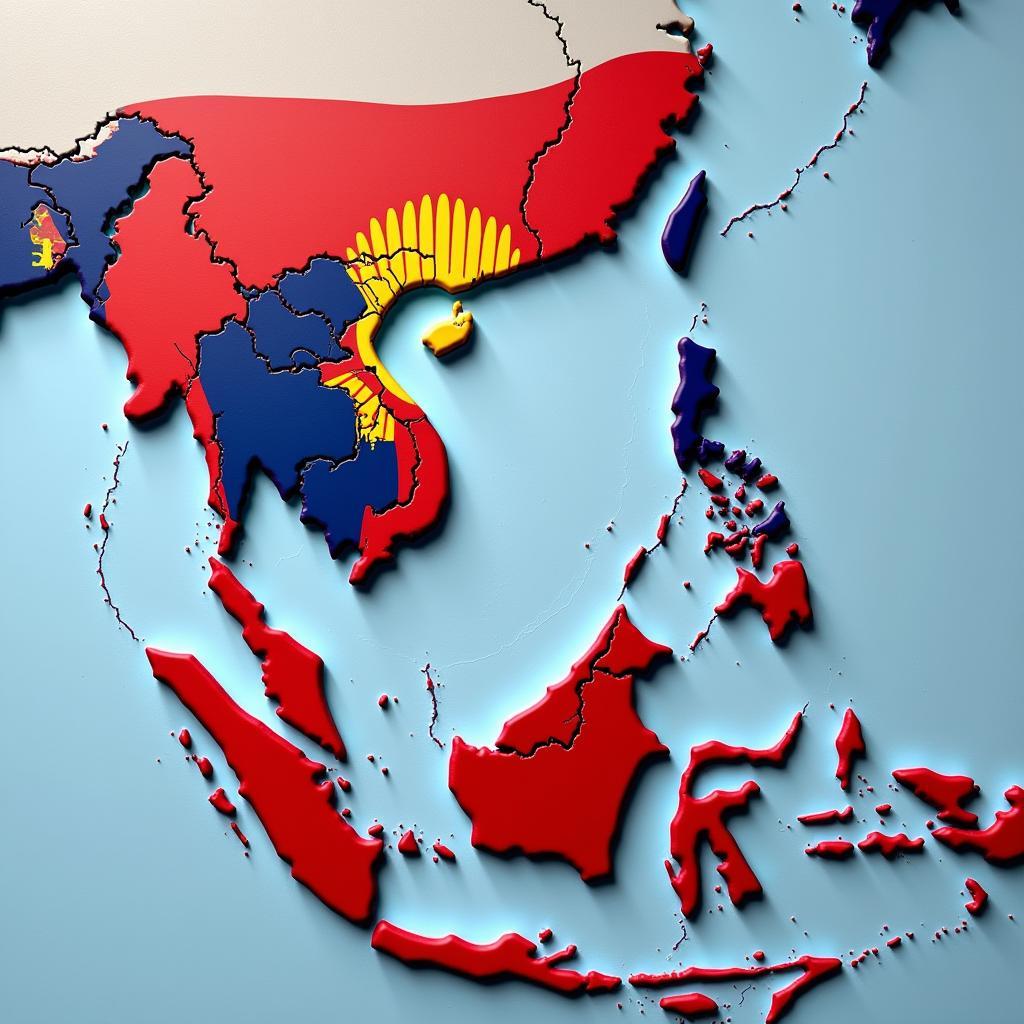The year 2017 presented a complex landscape for ASEAN nations grappling with the South China Sea disputes. Asean 2017 South China Sea discussions focused on managing tensions and promoting cooperation amidst competing claims and rising anxieties. This article delves into the key events and outcomes surrounding the South China Sea issue during 2017, exploring the challenges and opportunities faced by the regional bloc.
ASEAN’s 2017 Approach to the South China Sea
ASEAN member states approached the South China Sea issue in 2017 with a mix of caution and resolve. The bloc sought to balance its members’ diverse interests while upholding international law and promoting peaceful resolution. Key priorities included the Code of Conduct (COC) negotiations with China, managing maritime incidents, and enhancing cooperation on non-traditional security issues. asean 2017 south china sea issue
The Code of Conduct Negotiations
A major focus of ASEAN 2017 South China Sea diplomacy was the advancement of negotiations for a COC with China. The COC aimed to establish a framework for managing maritime activities and preventing escalation of tensions. Progress was made in agreeing on a framework for the COC, marking a significant step towards establishing a rules-based approach in the disputed waters.
 ASEAN-China Code of Conduct Negotiations in 2017
ASEAN-China Code of Conduct Negotiations in 2017
Managing Maritime Incidents
2017 saw continued concerns over maritime incidents in the South China Sea, including fishing disputes, naval exercises, and land reclamation activities. ASEAN emphasized the importance of self-restraint and avoiding actions that could escalate tensions. Mechanisms for communication and incident management were explored to minimize the risk of miscalculation and confrontation.
Cooperation on Non-Traditional Security
Beyond the core territorial disputes, ASEAN recognized the importance of addressing non-traditional security challenges in the South China Sea. These included piracy, illegal fishing, and environmental degradation. Cooperation on these issues provided opportunities for building trust and fostering practical collaboration among claimant states. 2017 asean summit programme
Challenges and Opportunities in 2017
Navigating the complexities of the South China Sea in 2017 presented both challenges and opportunities for ASEAN. Differing perspectives among member states regarding the appropriate approach to China posed a persistent challenge to the bloc’s unity. However, the shared interest in maintaining regional stability and prosperity also provided a strong impetus for cooperation.
Balancing National Interests and Regional Unity
ASEAN’s diverse membership, with some states having closer ties to China than others, made it difficult to forge a unified front on the South China Sea issue. Balancing individual national interests with the need for a collective response remained a key challenge.
 ASEAN Unity and the South China Sea in 2017
ASEAN Unity and the South China Sea in 2017
Engaging with External Powers
The South China Sea dispute extended beyond the regional bloc, with major powers like the United States, Japan, and India taking an interest in the region. ASEAN faced the challenge of engaging with these external powers while maintaining its centrality and avoiding becoming a pawn in great power rivalries. asean +2
Leveraging International Law
International law, particularly the United Nations Convention on the Law of the Sea (UNCLOS), played a crucial role in framing the South China Sea discourse. ASEAN sought to leverage international legal frameworks to promote a rules-based order and peaceful settlement of disputes. However, the enforcement of international law remained a challenge in the absence of a strong international consensus.
What were the outcomes of the 2017 ASEAN Summit related to the South China Sea?
The 2017 ASEAN Summit resulted in the adoption of a framework for the COC, marking a significant step towards a more structured approach to managing the South China Sea disputes. The summit also reaffirmed ASEAN’s commitment to peaceful resolution and international law. articles about asean 2017
Conclusion: A Year of Cautious Progress
ASEAN’s approach to the South China Sea in 2017 was marked by a cautious pursuit of progress. While significant strides were made in the COC negotiations, the underlying challenges of managing diverse national interests and navigating great power competition remained. The ASEAN 2017 South China Sea experience underscored the need for continued dialogue, cooperation, and adherence to international law in pursuit of a peaceful and stable regional order. 2017 asean summit summary
FAQs
- What is the COC? The Code of Conduct is a set of rules being negotiated between ASEAN and China to manage maritime activities in the South China Sea.
- Why is the South China Sea important? The South China Sea is a vital waterway for global trade and rich in natural resources.
- What are the main challenges facing ASEAN in the South China Sea? Key challenges include managing differing member state perspectives, engaging with external powers, and enforcing international law.
- What was achieved in 2017 regarding the South China Sea? A framework for the COC was adopted, marking a step towards a more structured approach to the disputes.
- How does ASEAN promote peace in the South China Sea? ASEAN emphasizes dialogue, cooperation, and adherence to international law.
When you need assistance, please contact us via Phone: 0369020373, Email: aseanmediadirectory@gmail.com or visit us at: Ngoc Lien Village, Hiep Hoa, Bac Giang, Vietnam. Our customer service team is available 24/7.